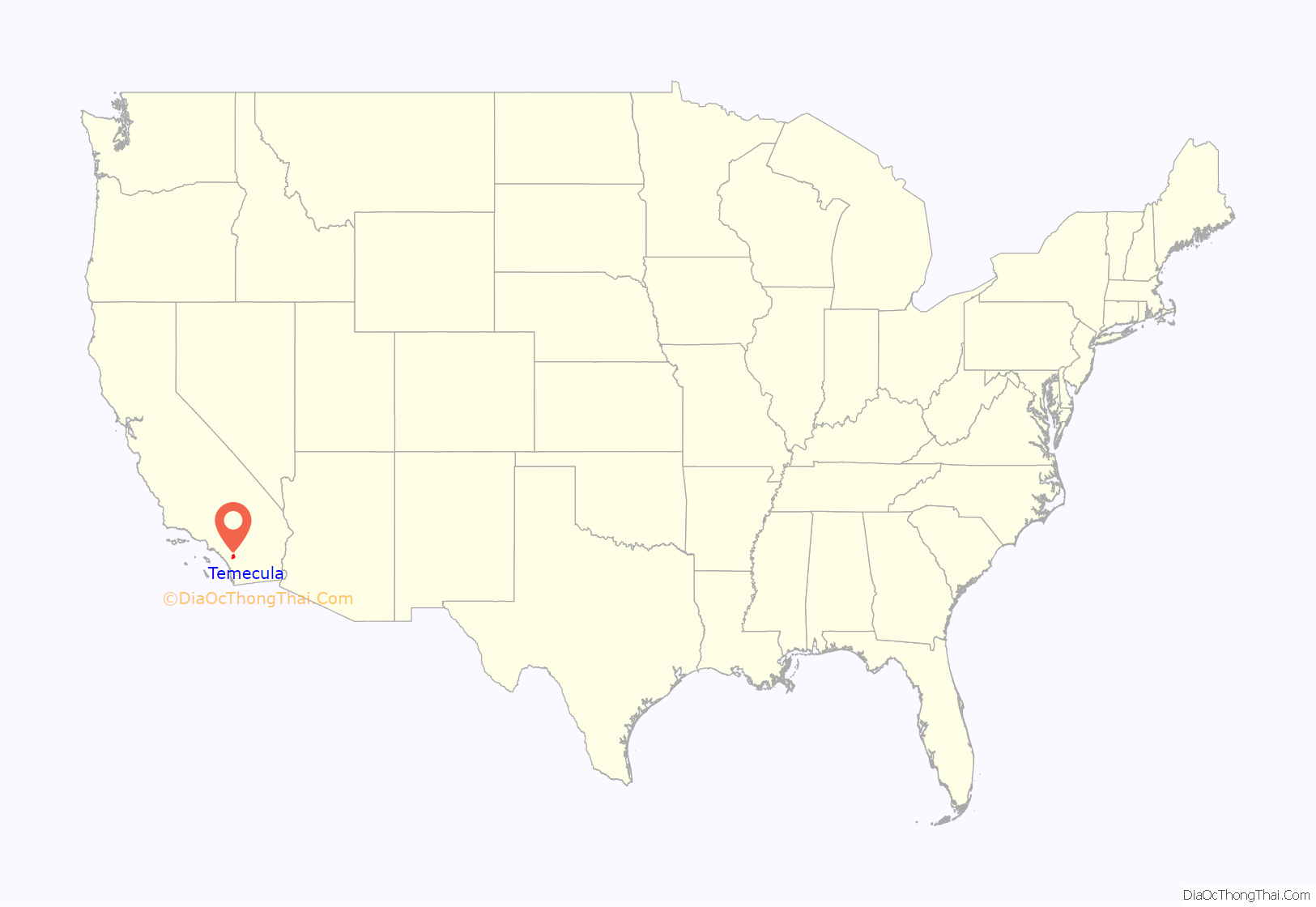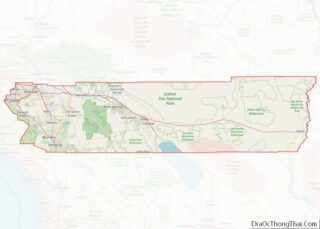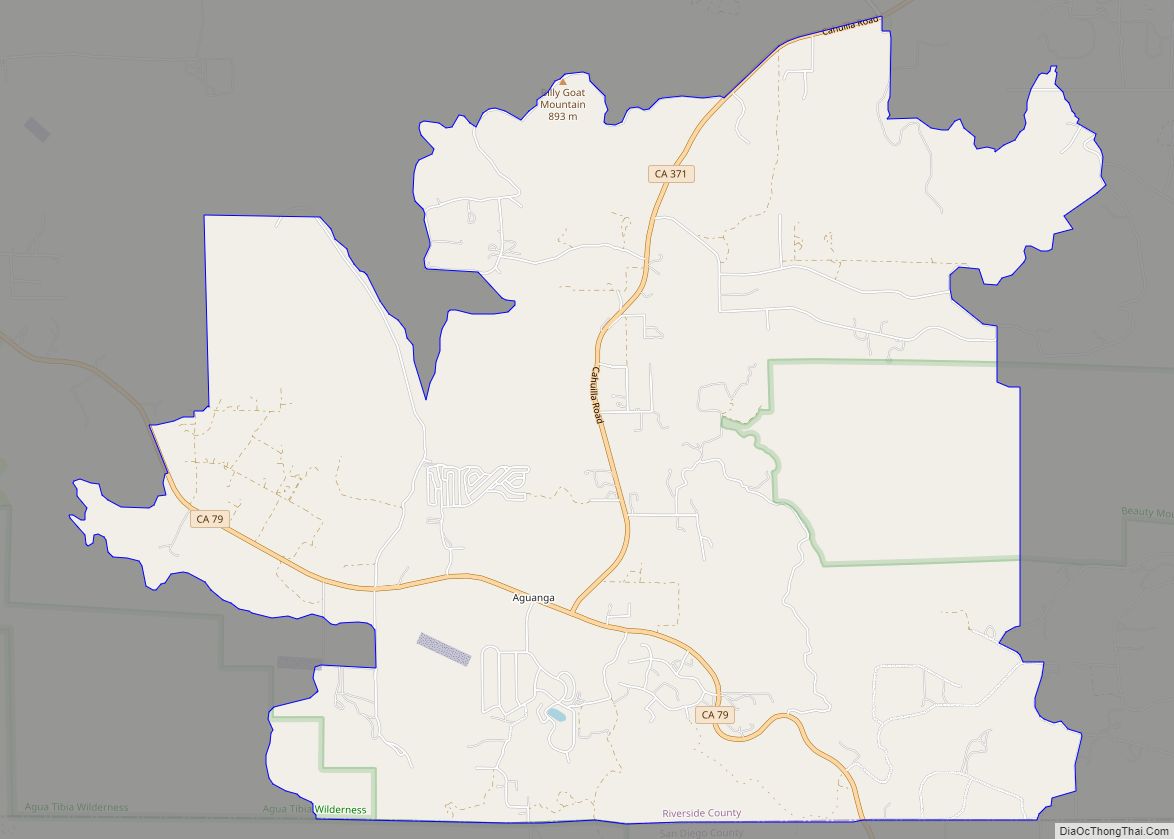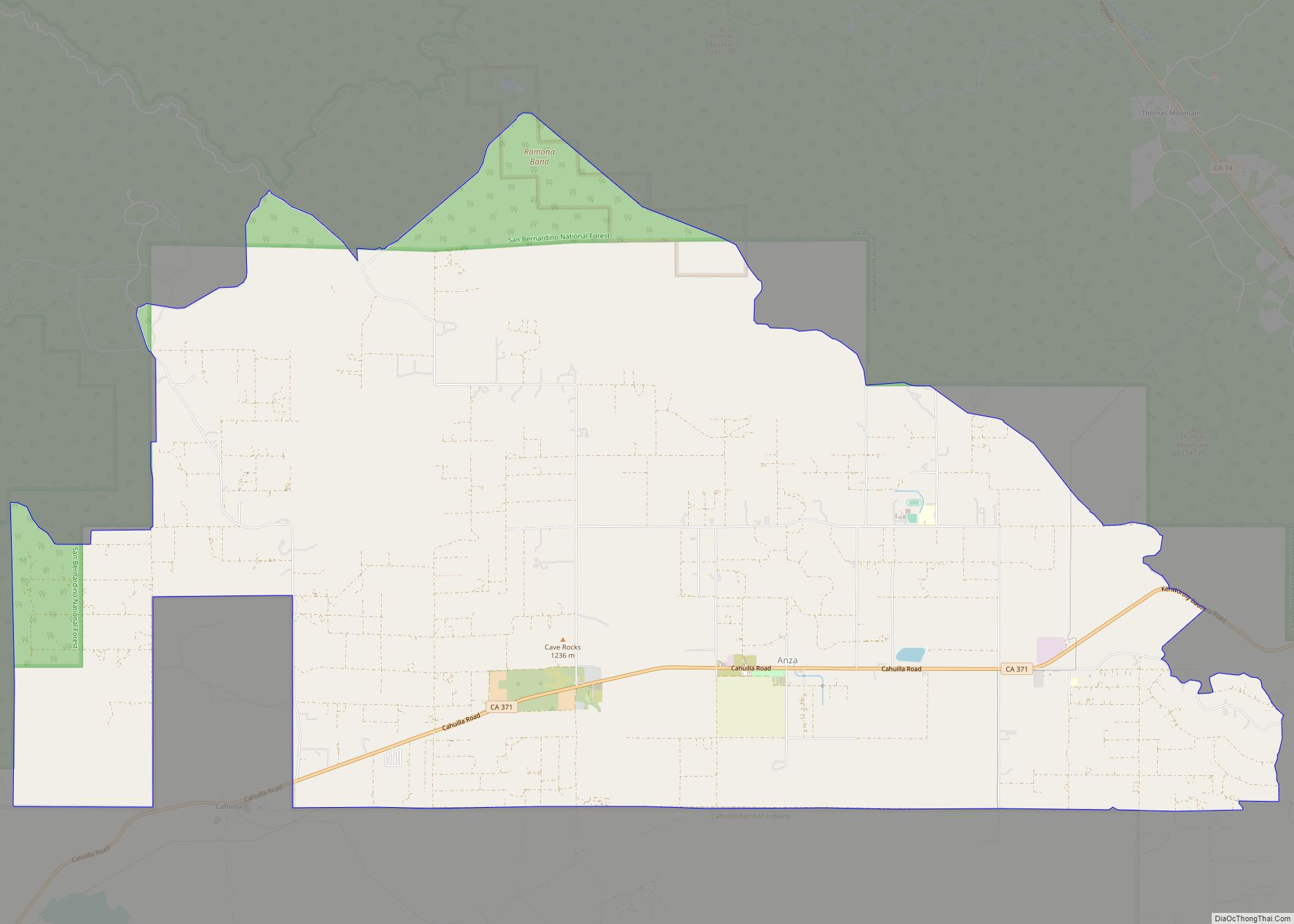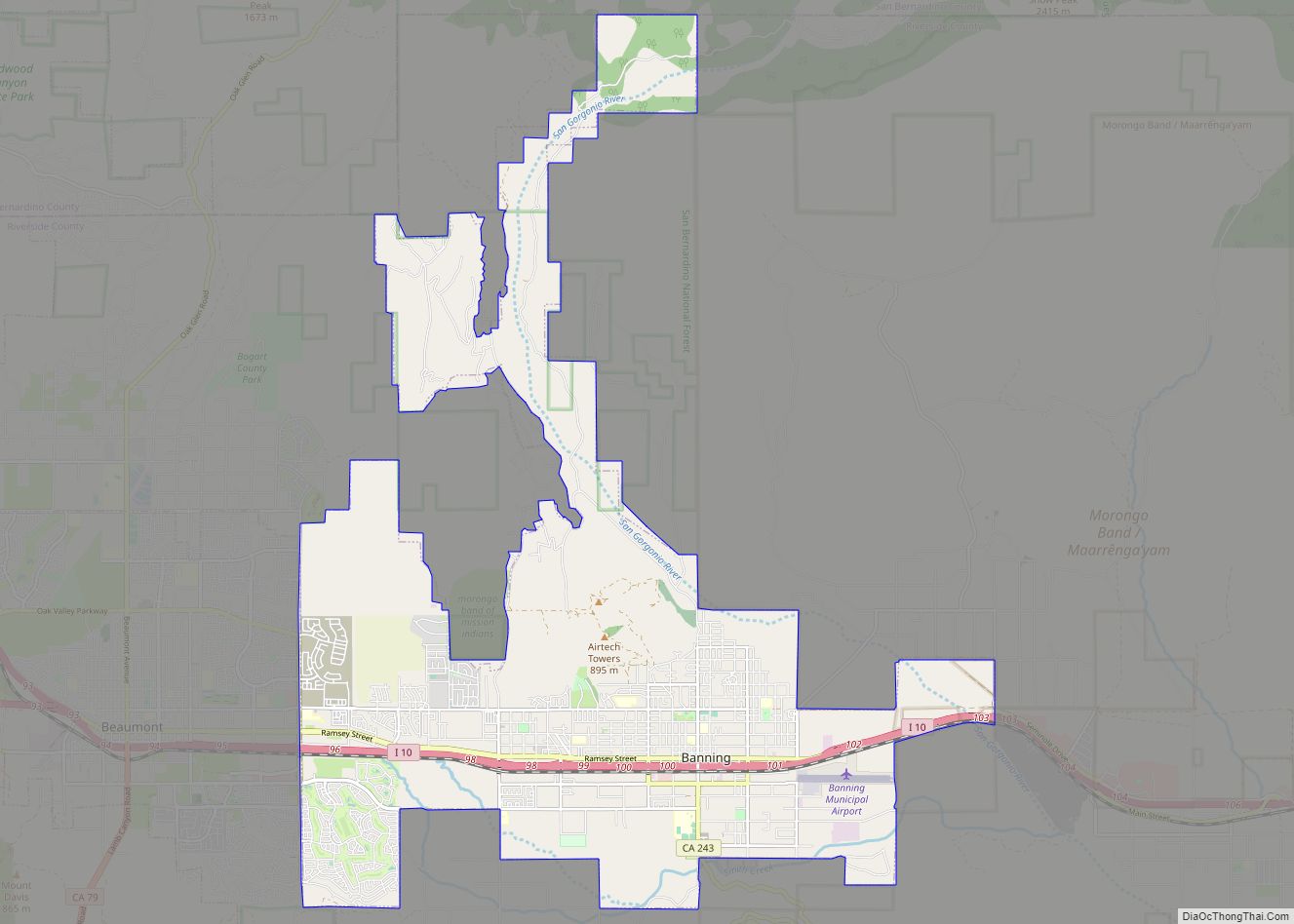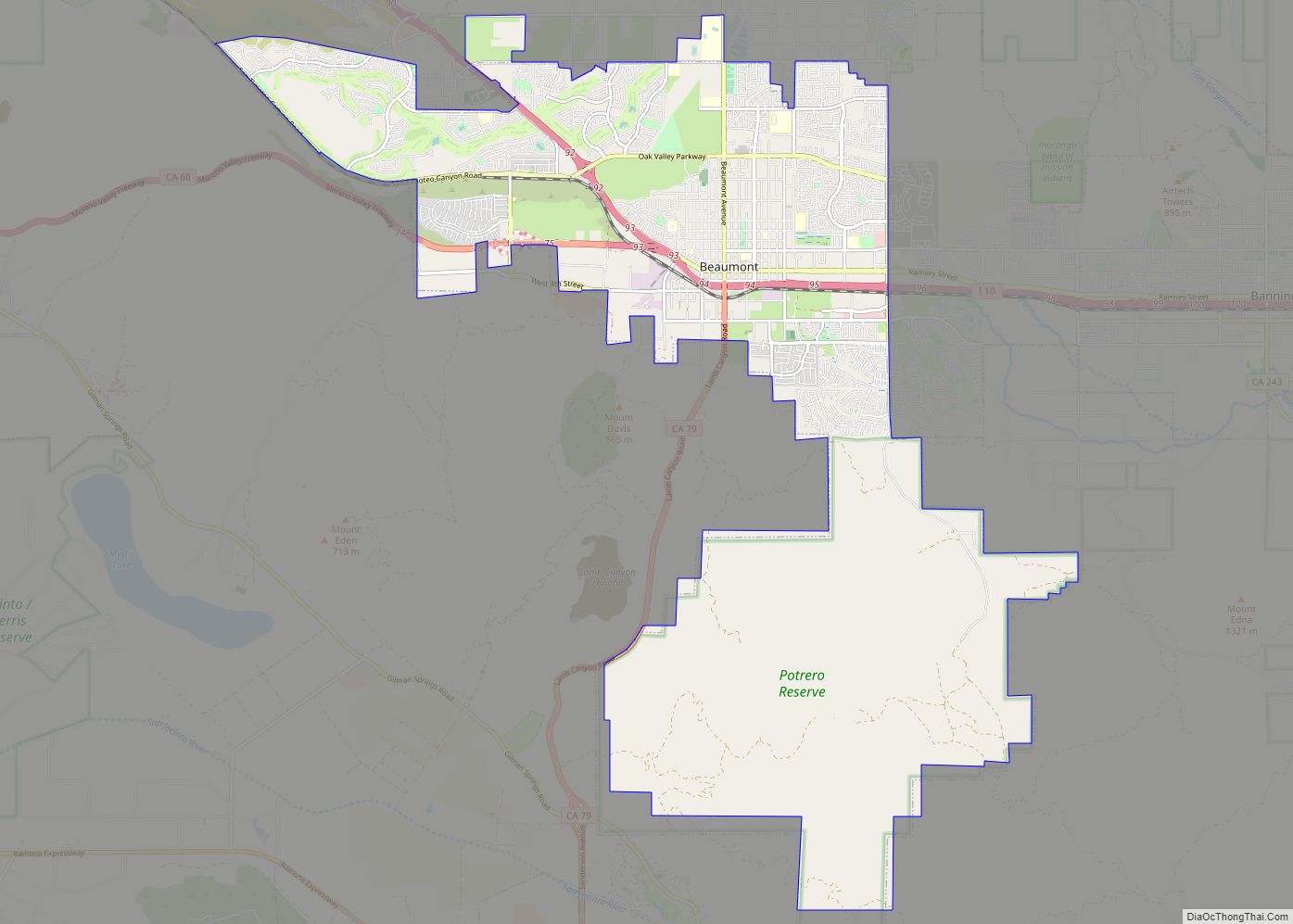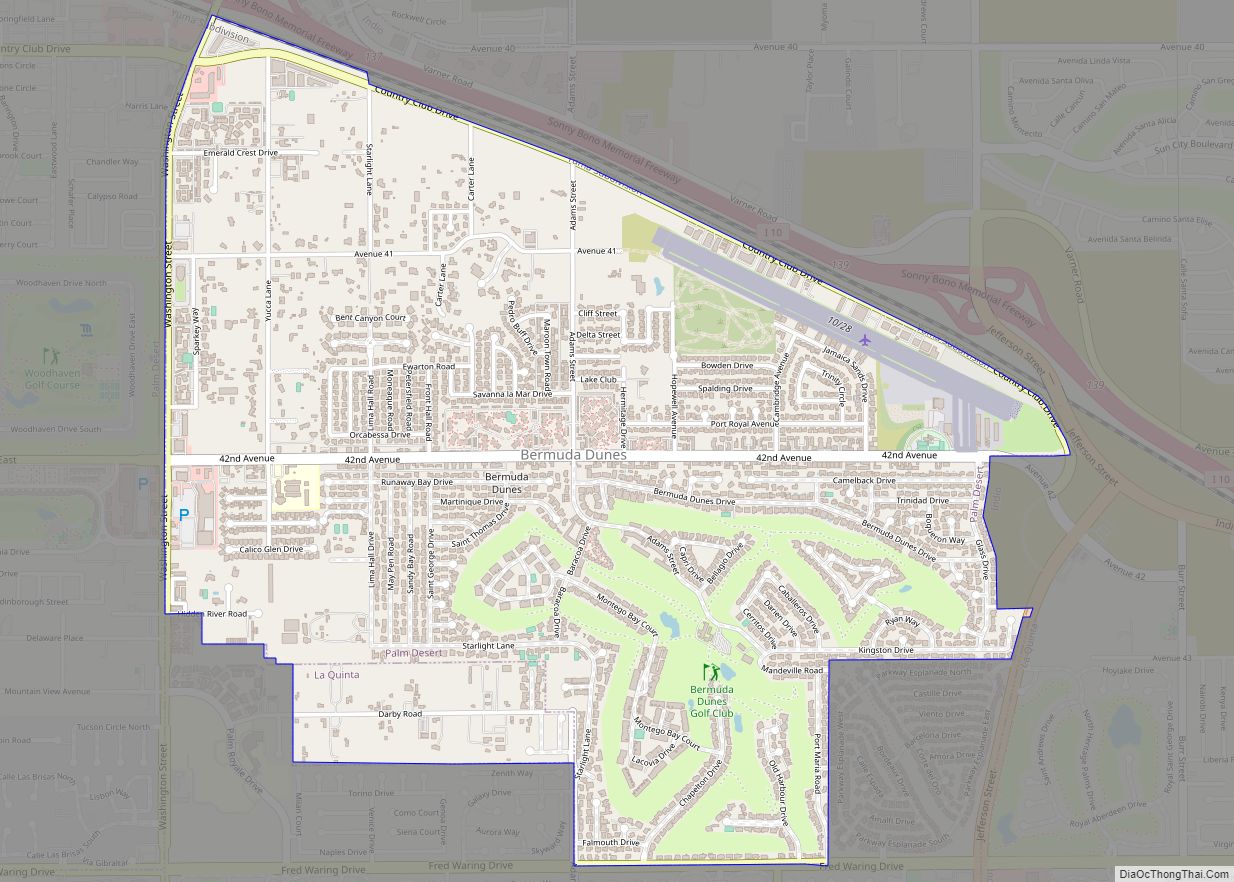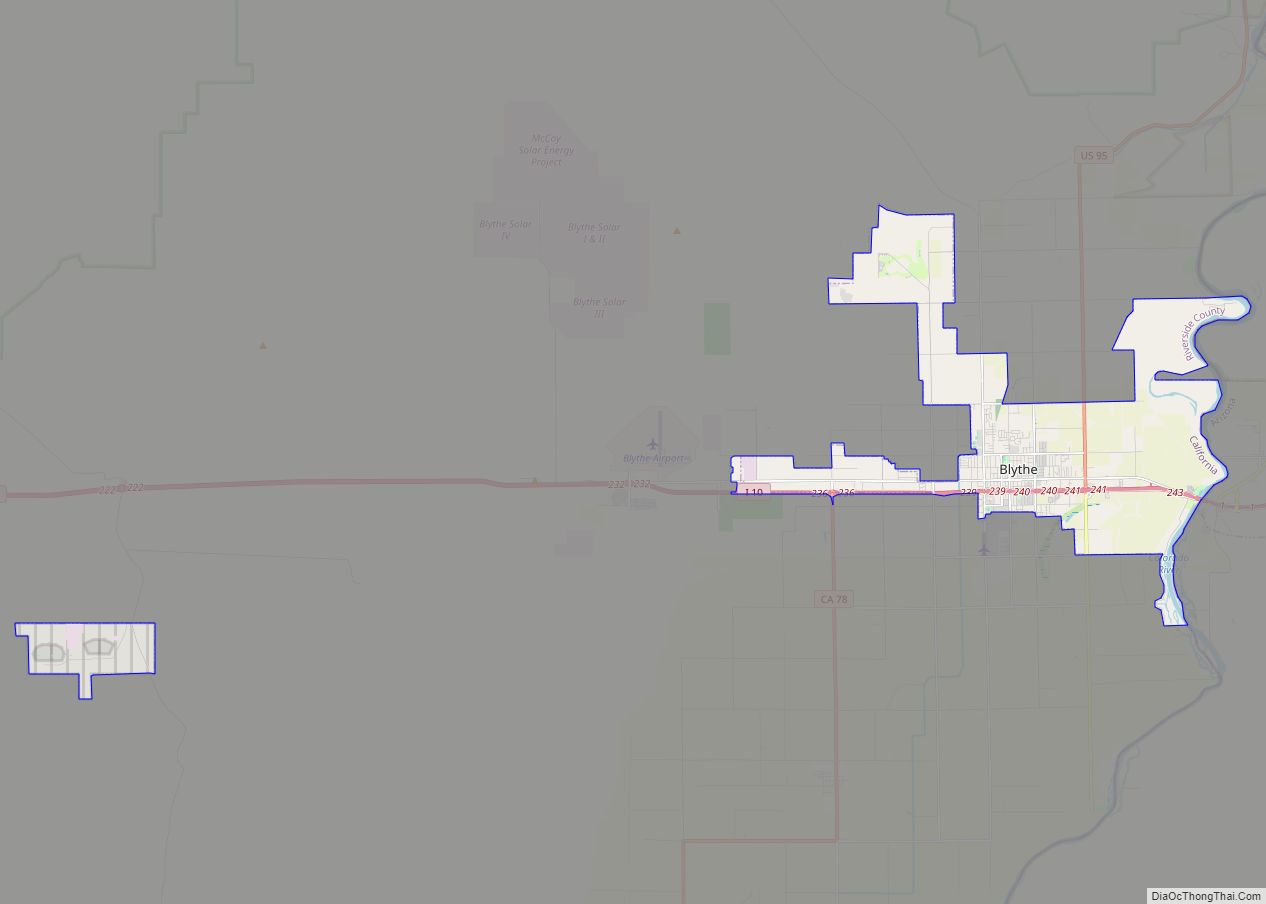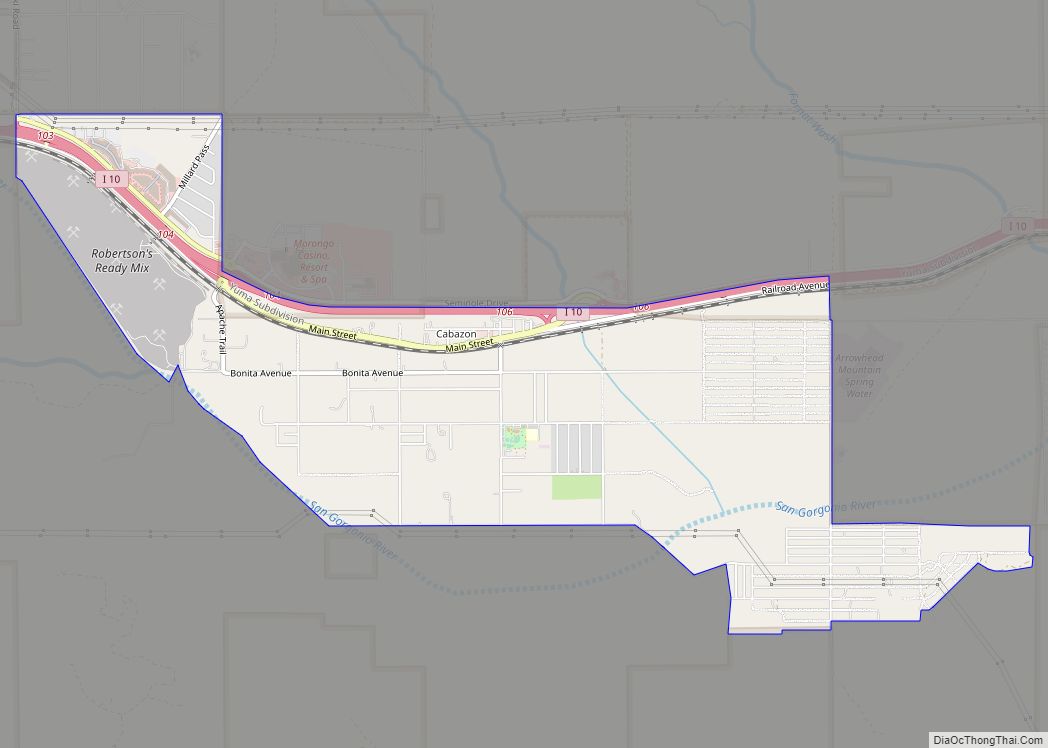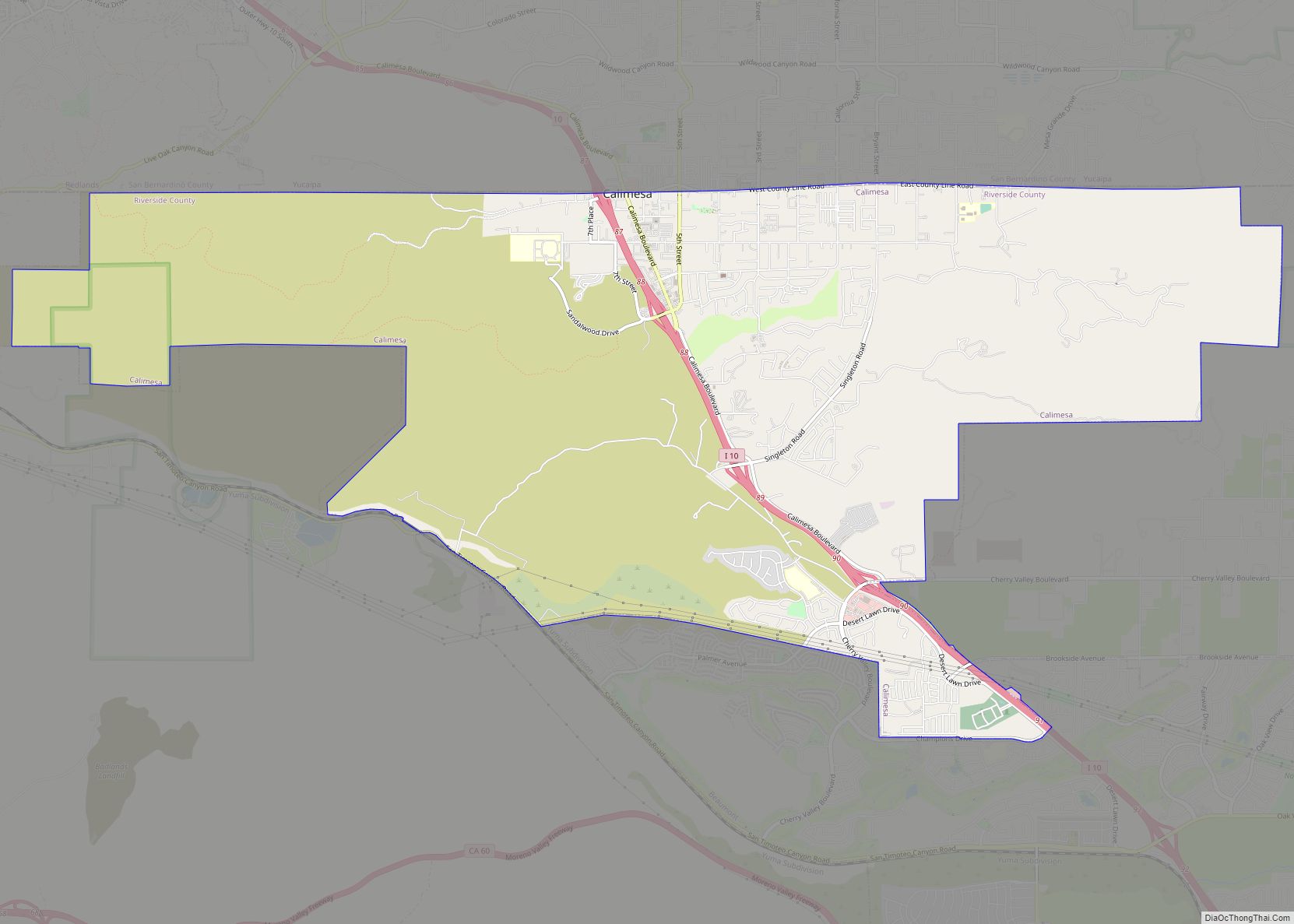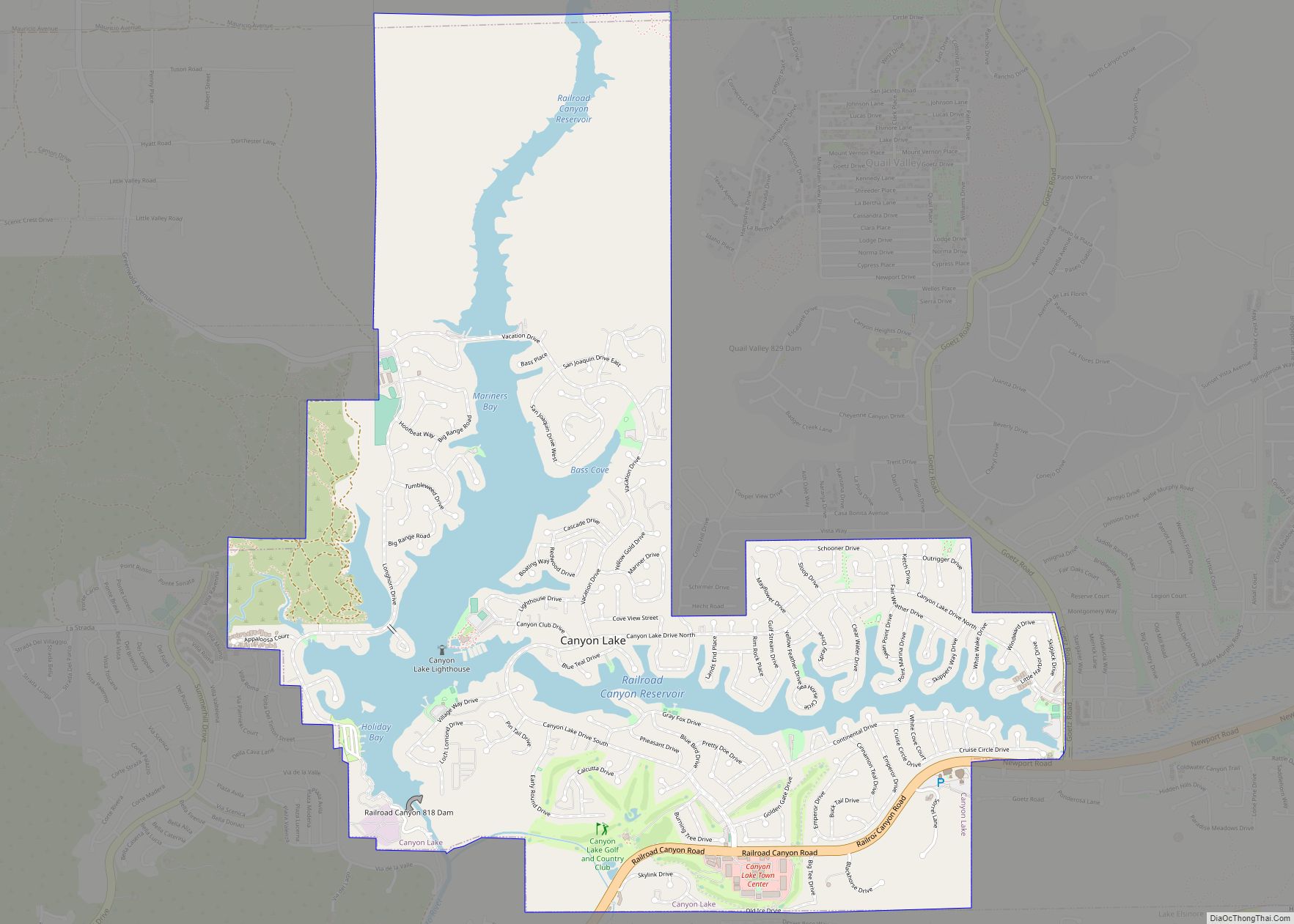Temecula (/təˈmɛkjʊlə/; Spanish: Temécula, [te’mekula]; Luiseño: Temeekunga) is a city in southwestern Riverside County, California, United States. The city had a population of 110,003 as of the 2020 census and was incorporated on December 1, 1989. The city is a tourist and resort destination, with the Temecula Valley Wine Country, Old Town Temecula, the Temecula Valley Balloon & Wine Festival, the Temecula Valley International Film Festival, championship golf courses, and resort accommodations contributing to the city’s economic profile.
The city of Temecula, forming the southwestern anchor of the Inland Empire region, is approximately 58 miles (93 km) north of downtown San Diego and 85 miles (137 km) southeast of downtown Los Angeles. Although Temecula is geographically closer to downtown San Diego than downtown Los Angeles, it is considered part of the Greater Los Angeles area. Temecula is bordered by the city of Murrieta to the north and the Pechanga Indian Reservation and San Diego County to the south. Temecula is also the principal city of the Temecula–Murrieta–Menifee, CA urban area, which had a population of 528,991 as of the 2020 census.
| Name: | Temecula city |
|---|---|
| LSAD Code: | 25 |
| LSAD Description: | city (suffix) |
| State: | California |
| County: | Riverside County |
| Founded: | April 22, 1859; 164 years ago (1859-04-22) |
| Incorporated: | December 1, 1989; 33 years ago (1989-12-01) |
| Elevation: | 1,017 ft (310 m) |
| Land Area: | 37.18 sq mi (96.30 km²) |
| Water Area: | 0.01 sq mi (0.02 km²) 0.03% |
| Population Density: | 2,958.66/sq mi (1,142.29/km²) |
| Area code: | 951 |
| FIPS code: | 0678120 |
| Website: | temeculaca.gov |
Online Interactive Map
Click on ![]() to view map in "full screen" mode.
to view map in "full screen" mode.
Temecula location map. Where is Temecula city?
History
Pre-1800
The area was inhabited by the Temecula Indians for hundreds of years before their contact with the Spanish missionaries (the people are now generally known as the Luiseños, after the nearby Mission San Luis Rey de Francia). Seven bands of Luiseño Indians inhabited the Temecula valley pre-contact: the Pechanga, La Jolla, Soboba, Pala, Rincon, Pauma, and San Luis Rey bands (presently, all of the bands except the San Luis Rey are federally recognized tribes). The Pechanga Band of Luiseño believe their ancestors have lived in the Temecula area for more than 10,000 years, though ethnologists think they arrived at a more recent date. In Pechanga history, life on Earth began in the Temecula Valley. They call it “‘Éxva Temeéku”, the place of the union of Sky-father, and Earth-mother (“Tuukumit’pi Tamaayowit”). The Temecula Indians (“Temeekuyam”) lived at “Temeekunga”, or “the place of the sun”. Other popular interpretations of the name include “The sun that shines through the mist” or “Where the sun breaks through the mist”.
The first recorded Spanish visit occurred in October 1797, with a Franciscan padre, Father Juan Norberto de Santiago, and Captain Pedro Lisalde. Father Santiago kept a journal in which he noted seeing “Temecula … an Indian village”. The trip included the Lake Elsinore area and the Temecula Valley.
1800–1900
Little is known about the early 1800s because Temecula records were destroyed in the fire that followed the 1906 San Francisco earthquake.
In 1798, Spanish missionaries established the Mission of San Luis Rey de Francia and designated the Indians living in the region as “Sanluiseños”, shortened to “Luiseños”. In the 1820s, the nearby Mission San Antonio de Pala was built.
The Mexican land grants made in the Temecula area were Rancho Temecula, granted to Felix Valdez, and to the east Rancho Pauba, granted to Vicente Moraga in 1844. Rancho Little Temecula was made in 1845 to Luiseño Pablo Apis, one of the few former mission converts to be given a land grant. It was fertile well watered land at the southern end of the valley, which included the village of Temecula. A fourth grant, known as Rancho Santa Rosa, was made to Juan Moreno in 1846, and was in the hills to the west of Temecula.
On December 6, 1846, at the Battle of San Pasqual, Andrés Pico led Californios to kill over twenty of U.S. General Stephen W. Kearny’s men. Subsequently, in January 1847, José Lugo with Cahuilla Indians came to the Temecula Valley in pursuit of the Luiseño Indians and killed an unknown number, about 40-100 of them, reportedly, in the canyon just west of the current Vail Lake Dam.
As American settlers moved into the area after the war, conflict with the native tribes increased. A treaty was signed in the Magee Store in Temecula in 1852, but was never ratified by the United States Senate. In addition, the Luiseños challenged the Mexican land grant claims, as, under Mexican law, the land was held in trust to be distributed to the local Indian tribes after becoming subjects. They challenged the Apis claim to the Little Temecula Rancho by taking the case to the 1851 California Land Commission. On November 15, 1853, the commission rejected the Luiseño claim; an appeal in 1856 to the district court was found to be in favor of the heirs of Pablo Apis (he had died in late 1853 or early 1854). The Luiseño of Temecula village remained on the south side of Temecula Creek when the Apis grant was acquired by Louis Wolf in 1872; they were evicted in 1875.
A stagecoach line started a local route from Warner Ranch to Colton in 1857 that passed through the Temecula Valley. Within a year, the Butterfield Overland Mail stagecoach line, with a route between St. Louis, Missouri, and San Francisco, stopped at Temecula’s Magee Store. On April 22, 1859, the first inland Southern California post office was established in Temecula in the Magee Store. This was the second post office in the state, the first being located in San Francisco. The Temecula post office was moved in the ensuing years; its present locations are the seventh and eighth sites occupied. The American Civil War put an end to the Butterfield Overland Stage Service, but stage service continued on the route under other stage companies until the railroad reached Fort Yuma in 1877.
In 1862, Louis Wolf, a Temecula merchant and postmaster, married Ramona Place, who was mixed-race and half Indian. Author Helen Hunt Jackson spent time with Louis and Ramona Wolf in 1882 and again in 1883. Wolf’s store became an inspiration for Jackson’s fictional “Hartsel’s store” in her 1884 novel, Ramona.
In 1882, the United States government established the Pechanga Indian Reservation of approximately 4,000 acres (16 km) some 6 miles (9.7 km) from downtown Temecula. Also in 1882, the California Southern Railroad, a subsidiary of the Santa Fe Railroad completed construction of the section from National City to Temecula. In 1883, the line was extended to San Bernardino. In the late 1880s, a series of floods washed out the tracks and the section of the railroad through the canyon was finally abandoned. The old Temecula station was used as a barn and later demolished.
In the 1890s, with the operation of granite stone quarries, Temecula granite was shaped into fence and hitching posts, curbstones, courthouse steps, and building blocks. At the turn of the 20th century, Temecula became an important shipping point for grain and cattle.
1900–1989
In 1904, Walter L. Vail, who had come to the United States with his parents from Nova Scotia, migrated to California. Along with various partners, he began buying land in Southern California. Vail bought ranchland in the Temecula Valley, buying 38,000 acres (154 km) of Rancho Temecula and Rancho Pauba, along with the northern half of Rancho Little Temecula. Vail was killed by a streetcar in Los Angeles in 1906; his son, Mahlon Vail, took over the family ranch. In 1914, financed by Mahlon Vail and local ranchers, the First National Bank of Temecula opened on Front Street. In 1915, the first paved, two-lane county road was built through Temecula.
By 1947, the Vail Ranch contained over 87,500 acres (354 km). In 1948, the Vail family built a dam to catch the Temecula Creek water and created Vail Lake. Through the mid-1960s, the economy of the Temecula Valley centered around the Vail Ranch; the cattle business and agriculture were the stimuli for most business ventures.
In 1964, the Vail Ranch was sold to the Kaiser—Aetna partnership. A later purchase by the group brought the total area to 97,500 acres (395 km), and the area became known as Rancho California.
In the 1970 census, the United States Census Bureau enumerated the population of the entire Murrieta-Rancho California-Temecula area at 2,769.
In 1970, the Temecula Town Association, a non-profit, charitable organization, incorporated. In 1977, the present-day Rancho California Water District was formed. On November 5, 1979, KRTM 88.9 FM went on the air in Temecula.
In the 1980 census, 10,215 people were enumerated in the area, a 269 percent increase from the prior census.
In 1984, the Temecula American Viticultural Area (AVA), the official designation for the local wine country (renamed the Temecula Valley AVA in 2004), was established. In 1985, the completion of Interstate 15 between the Greater Los Angeles area and San Diego began a subdivision land boom, making it possible to own a new home in Temecula and have a manageable work commute to San Diego County.
On December 1, 1989, Temecula incorporated as a city, with Ron Parks as the first mayor.
1990–present
In 1990, the first United States Census Bureau count of Temecula as a city enumerated 27,099 people. The 1990s brought rapid growth to the Temecula Valley. Many families began moving to the area from San Diego, Los Angeles, and Orange County, drawn by the affordable housing prices and the popular wine country.
From 1993 to 1998, Zev Buffman, and later with Dusty Rogers, son of Roy Rogers, promoted an historic district entertainment venue project renamed RogersDale U.S.A..
In 1995, the Pechanga Pow Wow began.
On October 27, 1999, the Promenade Mall opened in Temecula.
In 2005, Temecula annexed the master-planned community of Redhawk, bringing the population to 90,000. After a period of rapid population growth and home construction, the 2007 subprime mortgage financial crisis and the resultant United States housing market correction caused a sharp rise in home foreclosures in the Temecula-Murrieta region.
In 2012, the city and the Pechanga tribe successfully blocked a proposal by Granite Construction to construct a rock quarry south of the city. The Pechanga tribe purchased the 365-acre site for $3 million, now known as Pu’eska Mountain.
In 2013, the 140-bed Temecula Valley Hospital opened, providing the city with a full range of hospital services.
In 2016, the Vail Headquarters historic district opened in the Redhawk Towne Center shopping center, repurposing several historic buildings such as the Wolf Store for retail, dining, and entertainment uses.
Temecula Road Map
Temecula city Satellite Map
Geography
According to the United States Census Bureau, the city has a total area of 37.19 square miles (96.3 km), of which 37.18 square miles (96.3 km) of it is land and 0.012 square miles (0.031 km) of it (0.03%) is water. South of the city, Murrieta Creek and Temecula Creek join to form the Santa Margarita River.
Climate
Temecula has a hot-summer Mediterranean climate (Köppen: Csa). August is typically the hottest month of the year with December being the coldest month. Most precipitation occurs from November to March with February being the wettest month. Winter storms generally bring moderate precipitation, but strong winter storms are not uncommon especially during “El Niño” years. The driest month is June. Annual precipitation is 14.14 inches (359 mm). Morning marine layer is common during May and June. From July to September, Temecula experiences hot, dry weather with the occasional North American monsoonal flow that increases the humidity and brings isolated thunderstorms. Most of the storms tend to be short-lived with little rainfall. During late fall into winter, Temecula experiences dry, windy northeastern Santa Ana winds. Snowfall is rare, but Temecula has experienced traces of snowfall on occasion, some as recently as December 2014. A rare F1 tornado touched down in a Temecula neighborhood on February 19, 2005.
See also
Map of California State and its subdivision:- Alameda
- Alpine
- Amador
- Butte
- Calaveras
- Colusa
- Contra Costa
- Del Norte
- El Dorado
- Fresno
- Glenn
- Humboldt
- Imperial
- Inyo
- Kern
- Kings
- Lake
- Lassen
- Los Angeles
- Madera
- Marin
- Mariposa
- Mendocino
- Merced
- Modoc
- Mono
- Monterey
- Napa
- Nevada
- Orange
- Placer
- Plumas
- Riverside
- Sacramento
- San Benito
- San Bernardino
- San Diego
- San Francisco
- San Joaquin
- San Luis Obispo
- San Mateo
- Santa Barbara
- Santa Clara
- Santa Cruz
- Shasta
- Sierra
- Siskiyou
- Solano
- Sonoma
- Stanislaus
- Sutter
- Tehama
- Trinity
- Tulare
- Tuolumne
- Ventura
- Yolo
- Yuba
- Alabama
- Alaska
- Arizona
- Arkansas
- California
- Colorado
- Connecticut
- Delaware
- District of Columbia
- Florida
- Georgia
- Hawaii
- Idaho
- Illinois
- Indiana
- Iowa
- Kansas
- Kentucky
- Louisiana
- Maine
- Maryland
- Massachusetts
- Michigan
- Minnesota
- Mississippi
- Missouri
- Montana
- Nebraska
- Nevada
- New Hampshire
- New Jersey
- New Mexico
- New York
- North Carolina
- North Dakota
- Ohio
- Oklahoma
- Oregon
- Pennsylvania
- Rhode Island
- South Carolina
- South Dakota
- Tennessee
- Texas
- Utah
- Vermont
- Virginia
- Washington
- West Virginia
- Wisconsin
- Wyoming
